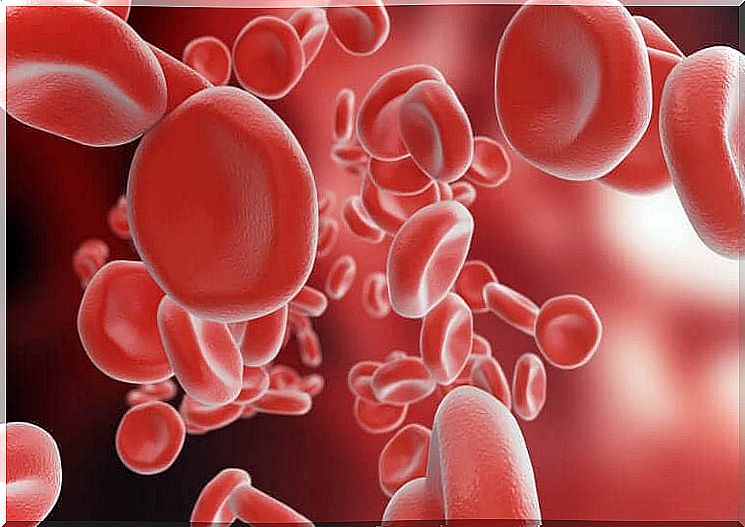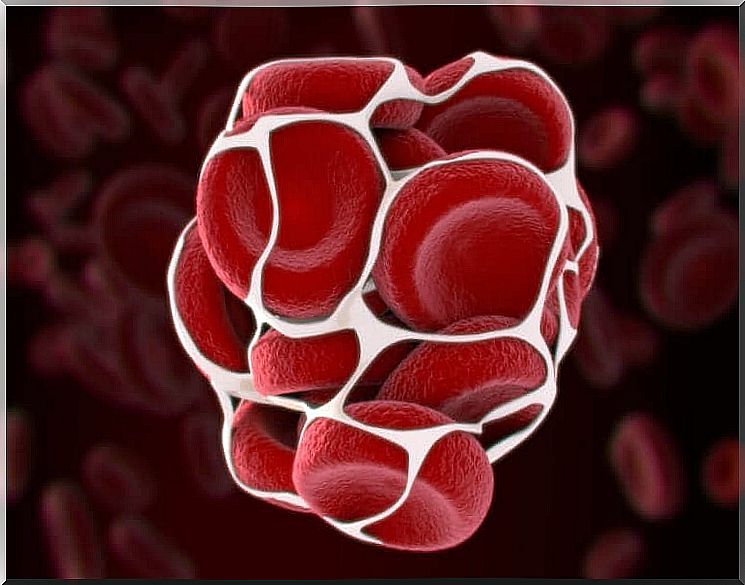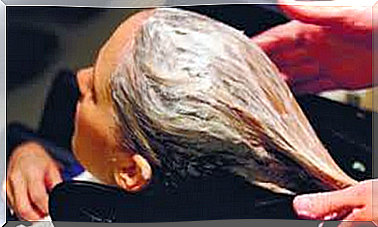Coagulation: What Does This Process Consist Of?
People who have a bleeding problem often have conditions in which bleeding after injury does not stop easily.

Coagulation is the process by which blood changes from a natural liquid state to a frozen state, forming a clot. A clot is a mass of blood that forms when platelets, blood cells, and certain proteins clump together.
It is important to distinguish the clot from a thrombus or embolus. The word thrombus refers to a clot that adheres to the wall of a blood vessel. In addition, emboli are clots which, during their circulation in the blood, stop in another part of the body, blocking the blood flow.
Coagulation is an essential process in life. In fact, all mammals have a similar coagulation system. That’s why in this article we tell you everything you need to know about this process.
What is coagulation?
To understand coagulation, we first need to understand a little bit about the physiology of blood. In the natural state, the blood circulates without going into this gelatinous state. The walls of the blood vessels are healthy and nothing is activated to cause clots to form.
At this time, the processes of anticoagulation and coagulation are in balance. These 2 processes involve many proteins responsible for guaranteeing this balance, called hemostasis.
When a blood vessel is damaged, there is a chain reaction and the activation of a series of proteins that causes the clot to form. This chain is called the coagulation cascade.
In this chain, more than 10 different proteins are involved. They are called coagulation factors. They are normally found in the blood plasma.
The coagulation process

In summary, here is what happens during coagulation:
- First of all, there is a small tear in the wall of the blood vessel: this causes hemorrhage. The term “hemorrhage” is used simply to denote a loss of blood from the vessels, regardless of the amount.
- Then the blood vessels constrict: this happens in order to limit the flow of blood to prevent it from escaping through the wound
- Platelets are activated: these are parts of cells that circulate in the blood. They clump together in the area where the injury occurred, forming a tampon. At this time, one of the most important coagulation factors occurs: von Willebrand factor
- Finally, the rest of the coagulation factors activate the production of fibrin: fibrin is a strong substance that allows the formation of a kind of network that firmly maintains the buffer.
When the wound heals, this tampon that has formed (the clot) dissolves. This is how the balance is restored and the vessel returns to its natural state.
What diseases are linked to coagulation?
As we have mentioned, coagulation is a fundamental process for life. When one of the elements does not work, many diseases can appear. Here are some examples.
Von Willebrand disease

It is the most common disorder related to coagulation. People suffering from this disease have a problem with the eponymous clotting factor. As we mentioned, this is the one that allows platelets to clump together.
It is estimated that 1% of the population suffers from it. Symptoms are mild, however, and few people are diagnosed. Here are some of the symptoms:
- Nosebleed that takes a long time to stop
- Heavy periods in women
- Excessive bleeding after an injury, or blood in urine and stool
Coagulation pathology: hemophilia
This is a bleeding disorder in which the person does not have factor VIII or IX. These people tend to bleed for a long time after an injury. This is because their blood does not clot normally.
It is an inherited disease which can be very serious. When internal bleeding occurs, organs and tissues can be damaged and put the patient’s life in danger.
Surprisingly, this is the disorder that many members of the 19th century royal families suffered. For example, the son of the last Russian tsars suffered from this disease. This is how many studies have aimed to discover its genetic origin.
In conclusion
Coagulation is a complex process that keeps us alive. It is important to study how it works in order to treat people who have a bleeding problem.









